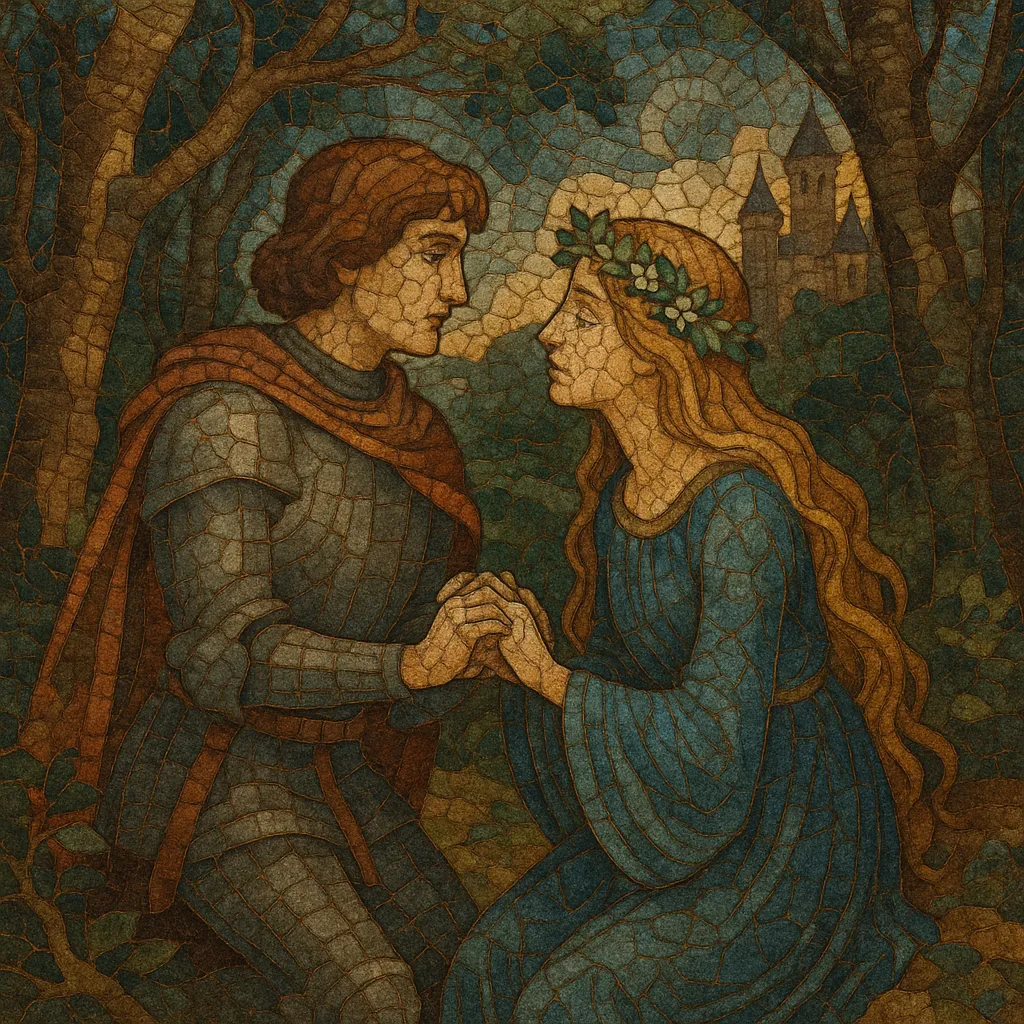Romantische Oper (German Romantic opera) is a 19th‑century German operatic current that fuses the Singspiel tradition of spoken dialogue and lyrical numbers with the Romantic era’s fascination for nature, folklore, medieval legend, and the supernatural.
Dramatically, it often centers on quests, haunted forests, and moral trials, while musically it emphasizes colorful orchestration, folk‑like melodies, rich choral writing, and early forms of thematic recall that foreshadow the later leitmotif technique. Horn calls, vivid woodwind writing, and evocative harmonic colorations (chromaticism, modal mixture, and diminished harmonies) paint atmospheres of mystery and wonder.
Romantische Oper grew out of the German Singspiel tradition (with spoken dialogue) and the broader Romantic movement’s interest in folklore, the supernatural, and the power of nature. Early seeds can be heard in late Classical/early Romantic stage works, but the aesthetic crystallized in the 1810s–1820s.
Carl Maria von Weber’s Der Freischütz (1821) is widely regarded as the landmark work that codified the genre’s traits: rustic and folk‑tinged melodies, choral scenes of villagers and hunters, evocative orchestration (notably horn calls), the Wolf’s Glen supernatural scene, and dramatic harmony supporting narrative atmosphere. Weber’s later operas (Euryanthe, Oberon) and Louis Spohr’s Undine consolidated the idiom, while E. T. A. Hoffmann’s Undine (1816) anticipates key Romantic themes.
Heinrich Marschner (Der Vampyr, Hans Heiling) deepened the supernatural and Gothic coloring, pairing singable arias and ensembles with darker orchestral palettes. Albert Lortzing cultivated a lighter, comic offshoot (Spieloper) that retained Romantic charm while emphasizing characterization and ensemble finales. Parallel currents—opera seria and buffa—remained formative backdrops for structure and number types.
Richard Wagner’s early operas (Die Feen, Der fliegende Holländer, Tannhäuser, Lohengrin) extend Romantische Oper’s materials—folklore, legends, scenic orchestration—toward continuous music‑drama and more systematic leitmotivic writing. By mid‑century, Romantische Oper had shaped the expressive expectations of German opera and informed later symphonic and theatrical conceptions, even as Wagner’s mature music dramas superseded its number‑opera format.
Choose stories rooted in folklore, medieval legend, or the supernatural. Set scenes in forests, castles, or rustic villages. Contrast intimate, lyrical moments with communal choruses and a spectacular supernatural tableau.
Use a number‑opera layout (arias, duets, ensembles, choruses) with spoken dialogue (in the Singspiel vein) or sparing recitative; later acts can be more continuous. Write singable, folk‑tinged melodies for arias; craft ensemble finales that build dramatic momentum; and give the chorus a narrative role (villagers, hunters, pilgrims).
Employ Romantic harmonic color: modal mixture, chromatic mediants, diminished and augmented‑sixth chords to underline suspense or the uncanny. Introduce recurring motives for characters or ideas (proto‑leitmotifs), varied through modulation, orchestration, and rhythm to track the drama.
Use a full early‑Romantic orchestra with prominent winds and horns (for hunting calls and nature evocations), lyrical clarinet solos, tremolo strings for tension, harp for magic or dreamlike scenes, and timpani to mark omens. Consider offstage brass/chorus for spatial effects and "melodrama" (spoken text over music) in supernatural scenes.
Blend graceful dances (Ländler, waltz) with marches and chorales; set rustic numbers in simple strophic forms, and escalate to complex ensembles in act finales. Keep text declamation clear in German, shaping phrase lengths to speech rhythm while preserving lyrical arcs.


